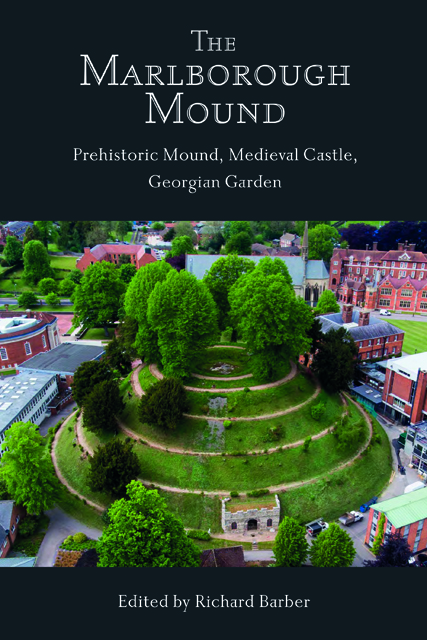Book contents
- Frontmatter
- Contents
- List of Figures
- Acknowledgements
- Preface
- 1 ‘One remarkable earthen-work’: The Neolithic Origins of the Marlborough Mound
- Afterword: The Round Mounds Project
- 2 Castles and the Landscape of Norman Wessex, c. 1066–1154
- 3 Marlborough Castle in the Middle Ages
- 4 The Mound as a Garden Feature
- Epilogue: The Marlborough Mound Trust
- A Inquisition into the State of Marlborough Castle, 11 September 1327
- B Castellum Merlebergensis, by H. C. Brentnall, F.S.A.
- C Constables of Marlborough Castle
- D Marlborough Castle: Archaeological Findings for the Medieval Period
- Bibliography
- Notes
- Contributors
- Index
D - Marlborough Castle: Archaeological Findings for the Medieval Period
Published online by Cambridge University Press: 11 January 2023
- Frontmatter
- Contents
- List of Figures
- Acknowledgements
- Preface
- 1 ‘One remarkable earthen-work’: The Neolithic Origins of the Marlborough Mound
- Afterword: The Round Mounds Project
- 2 Castles and the Landscape of Norman Wessex, c. 1066–1154
- 3 Marlborough Castle in the Middle Ages
- 4 The Mound as a Garden Feature
- Epilogue: The Marlborough Mound Trust
- A Inquisition into the State of Marlborough Castle, 11 September 1327
- B Castellum Merlebergensis, by H. C. Brentnall, F.S.A.
- C Constables of Marlborough Castle
- D Marlborough Castle: Archaeological Findings for the Medieval Period
- Bibliography
- Notes
- Contributors
- Index
Summary
Richard Barber
Excavations
The account of the medieval castle in Chapter 3 contains very little about its archaeology. The simple reason for this is that there have been relatively few excavations overall, and only one exploratory dig at the top of the mound. Most of the archaeological material is the result of excavations for other purposes, and the relatively few finds are mostly chance discoveries. What follows is a chronological summary of the recorded results of archaeological excavations and of geophysical surveys. There is more information as to the intended purpose of digs and surveys in the actual reports. The discussions and conclusions of the reports have been omitted, as the evidence from these operations is already reflected in the main body of this book.
In 1724, William Stukeley, in his Itinerarium Curiosam, is the first to offer a brief note on any found objects from the site, which he regarded as that of a Roman castrum called Cunetio. He saw a large copper coin of the emperor Titus, and was sure that the boundary of the earl of Hertford’s garden was one angle of the castrum ‘left very manifestly, the rampart and the ditch entire’. He marked the plan of the Roman fort on one of his illustrations and wrote: ‘I suppose it to have been 500 Roman feet square.’ The ditch and rampart were in fact those of the medieval castle; the site of Cunetio was discovered at Mildenhall in the nineteenth century.
The first reports of finds relate to building work on the site of the castle. In 1892, work near the laundry close to the mound did not produce anything medieval; nor did work in 1912 when a chimney was cut up the side of the mound for a water pump engine at the foot. In 1915, an excavation of the castle foundations started
at a point about 60 feet due South of the Mound. On the second day they struck a flint foundation running approximately East and West; this was followed westwards and signs of a wall turning to the South were found.
In the Winter Term, the operations were continued by following up the foundation eastwards, and by digging a trench towards the Mound between it and the original excavation.
- Type
- Chapter
- Information
- The Marlborough MoundPrehistoric Mound, Medieval Castle, Georgian Garden, pp. 159 - 172Publisher: Boydell & BrewerPrint publication year: 2022

